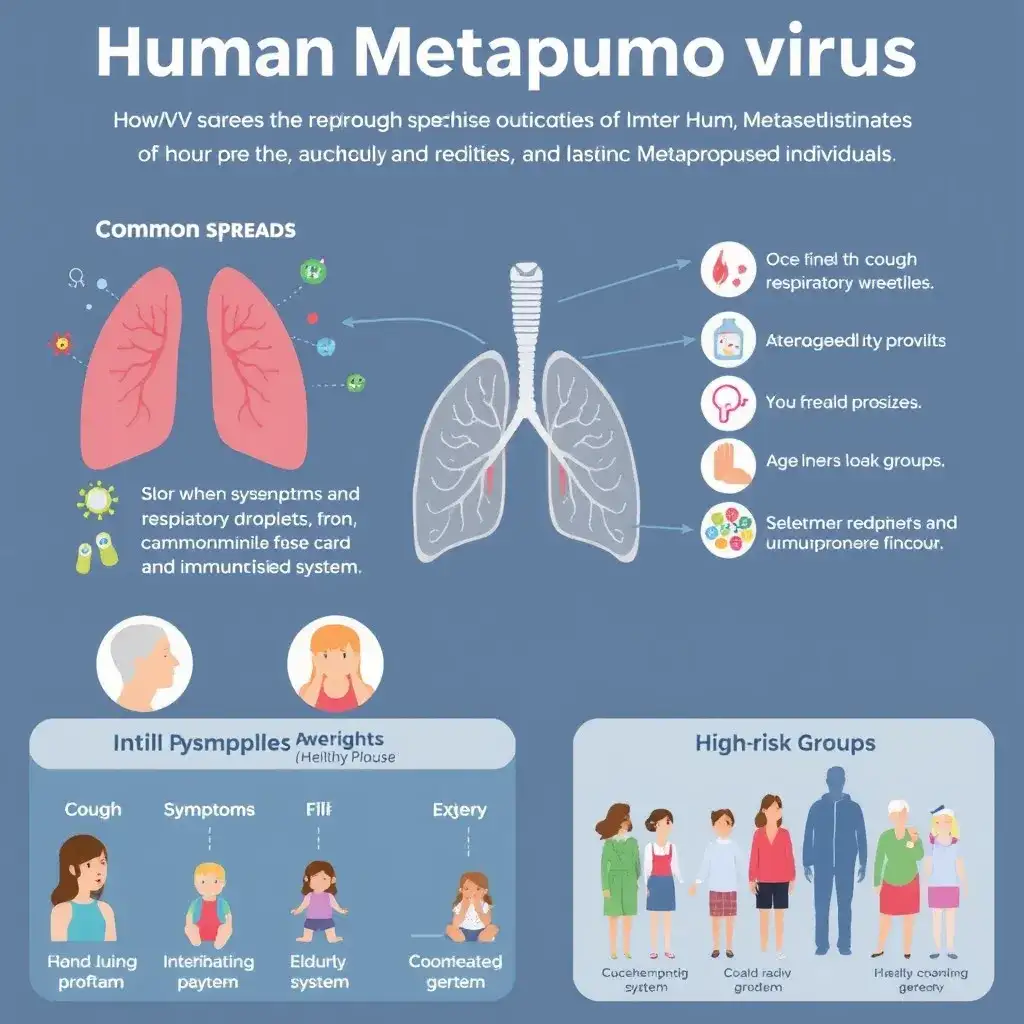Human Metapneumovirus (HMPV) is a respiratory virus that can cause infections in people of all ages. While it is most commonly associated with mild illnesses in healthy individuals, HMPV can lead to severe respiratory issues, particularly in vulnerable groups like infants, the elderly, and those with weakened immune systems. Understanding the causes, symptoms, and risk factors of HMPV is essential for preventing and managing this virus. In this article, we’ll break down everything you need to know about HMPV, from its transmission to the preventive measures you can take.
What is Human Metapneumovirus (HMPV)?
Human Metapneumovirus (HMPV) is a member of the Paramyxoviridae family, and it primarily affects the respiratory system. First discovered in 2001, this virus is closely related to respiratory syncytial virus (RSV), another common respiratory pathogen. HMPV is responsible for a variety of upper and lower respiratory illnesses, ranging from mild cold-like symptoms to more serious conditions like bronchiolitis and pneumonia.
HMPV spreads through respiratory droplets when an infected person coughs, sneezes, or talks. It can also spread by touching contaminated surfaces and then touching the face, eyes, nose, or mouth.
Common Symptoms of HMPV Infections
The symptoms of an HMPV infection can vary in severity, and they typically resemble those of other viral respiratory infections like the flu or RSV. Common symptoms include:
- Cough
- Fever
- Sore throat
- Runny or stuffy nose
- Wheezing
- Shortness of breath
In mild cases, the symptoms are similar to a common cold and resolve within a few days to a week. However, in severe cases, especially in infants, older adults, and those with weakened immune systems, the infection can lead to more serious respiratory problems such as:
- Bronchiolitis (inflammation of the small airways in the lungs)
- Pneumonia
- Severe wheezing and difficulty breathing
While most people recover without requiring medical attention, it is essential to be vigilant about symptoms, especially in vulnerable populations.
How HMPV Differs from Other Respiratory Illnesses
Human Metapneumovirus shares several characteristics with other viral respiratory infections, such as respiratory syncytial virus (RSV) and the flu (influenza virus), making it challenging to distinguish between these illnesses without proper diagnostic testing. Here’s a comparison:
- HMPV vs. RSV: Both viruses affect the respiratory tract and can cause similar symptoms like wheezing and difficulty breathing. However, RSV is typically more severe and a leading cause of hospitalization in infants and young children. While both viruses can cause bronchiolitis and pneumonia, HMPV infections tend to be less prevalent but still significant, particularly in elderly patients.
- HMPV vs. Influenza: Influenza (the flu) is known for its sudden onset of fever, chills, and muscle aches, while HMPV typically causes milder, more gradual symptoms. Both viruses can lead to complications, but the flu often results in more systemic symptoms like body aches and fatigue, while HMPV primarily impacts the respiratory system.
Risk Factors: Who is Most at Risk of HMPV?
Although Human Metapneumovirus can affect anyone, certain individuals are at a higher risk of developing severe complications. These high-risk groups include:
- Infants and young children: Infants, especially those under 1 year of age, are more vulnerable to respiratory infections like HMPV because their immune systems are still developing.
- Elderly individuals: Older adults, particularly those over 65, are at greater risk due to a weakened immune response and the presence of chronic health conditions.
- People with underlying health conditions: Individuals with conditions such as asthma, chronic obstructive pulmonary disease (COPD), or heart disease are more susceptible to severe respiratory issues caused by HMPV.
- Immunocompromised individuals: People undergoing chemotherapy, those with HIV/AIDS, or individuals who have had organ transplants may have compromised immune systems that make them more vulnerable to infections like HMPV.
Preventing HMPV Infections: Tips and Best Practices
While there is currently no vaccine specifically for HMPV, several preventive measures can help reduce the risk of infection:
- Wash hands frequently: Handwashing with soap and water is one of the most effective ways to prevent the spread of respiratory viruses, including HMPV.
- Avoid close contact with infected individuals: If you or someone you know is showing symptoms of HMPV, try to stay home and avoid contact with others.
- Disinfect commonly touched surfaces: Regularly clean and disinfect surfaces like doorknobs, light switches, and phones to minimize the chance of viral transmission.
- Practice good respiratory hygiene: Cover your nose and mouth when coughing or sneezing, and dispose of tissues immediately.
- Stay home when sick: If you’re feeling unwell, particularly with respiratory symptoms, it’s best to stay home to prevent spreading the virus to others.
Treatment for HMPV Infections
Currently, there are no antiviral medications specifically designed to treat Human Metapneumovirus. Most treatment focuses on managing symptoms. For mild cases, over-the-counter medications such as pain relievers and decongestants can help alleviate discomfort. Rest, hydration, and proper nutrition are also crucial for recovery.
For more severe cases, especially in vulnerable individuals, hospitalization may be necessary. Treatment may involve:
- Oxygen therapy to help with breathing difficulties
- Nebulized treatments or inhalers for wheezing
- IV fluids to prevent dehydration
If you or someone you know is showing signs of severe respiratory distress or having trouble breathing, seek medical attention immediately.
Conclusion
Human Metapneumovirus (HMPV) is a significant respiratory virus that affects both children and adults. While it often causes mild symptoms, it can lead to severe complications in high-risk individuals. Understanding HMPV’s causes, symptoms, and risk factors is crucial for preventing the spread of the virus and managing its impact. Although there is no vaccine for HMPV at this time, taking preventive measures, recognizing symptoms early, and seeking appropriate treatment can reduce the risk of severe illness.
For those at higher risk, including infants, the elderly, and immunocompromised individuals, taking extra precautions can help minimize the chances of contracting HMPV. Stay informed, practice good hygiene, and seek medical care if you experience severe symptoms to ensure a speedy recovery.
